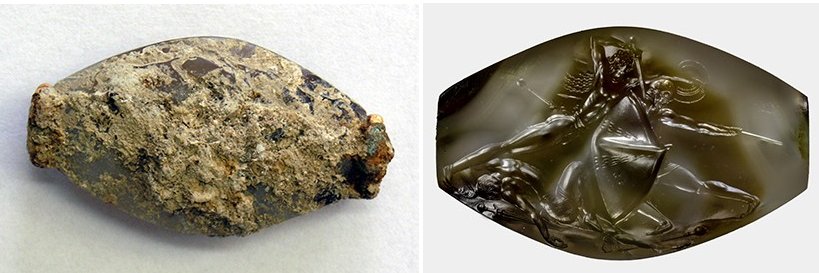Rare Minoan Sealstone Is A Miniature Masterpiece Unearthed In 3,500-Year-Old Tomb Of Powerful Mycenaean Warrior
A. Sutherland - AncientPages.com - A rare Minoan sealstone in the treasure-laden tomb of a Bronze Age Greek warrior has been discovered by University of Cincinnati archaeologists.
The grave itself - located in an olive grove near the ancient city of Pylos was discovered in 2015 by Jack L. Davis and Sharon R. Stocker, archaeologists at the University of Cincinnati who had excavated the site for more than 25 years.
The 3,500-year-old tomb belonged to a powerful Mycenaean warrior or priest buried around 1500 BC in southwest Greece. In the undisturbed and intact tomb, there were found four gold signet rings that have challenged accepted wisdom among archaeologists about the origins of Greek civilization.
Left: The limestone-encrusted sealstone was discovered lying face-down near the right arm of the Griffin Warrior. Courtesy of The Department of Classics, University of Cincinnati; Right: Due to the seal's small size and veining on the stone, many of the miniature details are only clearly visible via photomicroscopy. Courtesy of The Department of Classics, University of Cincinnati
After this discovery about a year later, excavations revealed another treasure, the so-called “Griffin Warrior”, an intricately carved gem, or sealstone, one of the finest prehistoric masterpieces of miniature Greek art ever discovered.
The “Pylos Combat Agate” that comes from tomb of the Griffin Warrior, which was hailed as the most spectacular archaeological discovery in Greece in more
Dig leaders Shari Stocker, a senior research associate in UC's Department of Classics, and Jack Davis, the university's Carl W. Blegen professor of Greek archaeology and department head said that it took a year of conservation works, and finally the seal revealed all its intricate details and the fierce prehistoric hand-to-hand battle.
An enlarged drawing of the stunningly detailed combat scene captured on an agate sealstone discovered by the University of Cincinnati's Sharon Stocker and Jack Davis. Tina Ross/Courtesy Department of Classics, University of Cincinnati. Color illustration/Ben Gardner, UC Creative Services
Davis and Stocker also said the Pylos Combat Agate’s craftsmanship and exquisite detail make it the finest discovered work of glyptic art produced in the Aegean Bronze Age. Some of the details on the sealstone are only a half-millimeter big.
“What is fascinating is that the representation of the human body is at a level of detail and musculature that one doesn’t find again until the classical period of Greek art 1,000 years later,” explained Davis. “It’s a spectacular find.”
The miniature masterpiece depicts a victorious warrior who, having already vanquished one unfortunate opponent sprawled at his feet, now turns his attention to another much more formidable foe, plunging his sword into the shielded man’s exposed neck in what is sure to be a final and fatal blow.
The scene conjures the sweeping and epic battles, larger-than-life heroes and grand adventures of Homer’s “The Iliad,” the epic Greek poem that immortalized a mythological decade-long war between the Trojan and Mycenaean kingdoms.
Left: The seal artist's attention to detail and use of stylized faces make the Pylos Combat Agate one of the finest works of prehistoric Greek art ever discovered. Courtesy of The Department of Classics, University of Cincinnati; Right: Many of the seal’s details, such as the intricate weaponry ornamentation, become clear only when viewed via photomicroscopy. Courtesy of The Department of Classics, University of Cincinnati
While the researchers can’t say that the image was intended to reflect a Homeric epic, the scene undoubtedly reflects a legend that was well known to Minoans and Mycenaeans, said Stocker.
The seal – most probably made on Crete - and other burial riches found within the tomb suggest that the man, known as the Griffin Warrior after the mythical animal depicted in his grave, was buried around 1450 BC.
See also:
Sophisticated Lenses Of Minoans Discovered In The Sacred Idaion Cave
Minoans: Mysterious, Advanced And One Of The Oldest Bronze Age Civilizations Of Europe
Genetic Mystery Solved: Ancient DNA Reveals Greeks Descended From The Minoans And The Mycenaeans
He held a respected position in Mycenaean society in times when the Minoan civilization of Crete was being transferred to cities of the Greek mainland.
An expert on Aegean art at the University of Vienna, Fritz Blakolmer, said that the sealstone is a miniature copy of a much larger original, probably a stucco-embellished wall painting like those found at the Palace of Knossos on Crete.
According to Blakolmer, the artist created this seal and used a magnifying glass, even though none has been found, and dismissed the possibility that people of that era had sharper eyesight than today.
In the spring of 2016, a UC-based team made a rich and rare discovery of an intact, Bronze Age warrior’s tomb dating back to about 1500 B.C. in the Pylos region of Greece. The Greek Culture Ministry declared the find the “most important to have been discovered [in continental Greece] in 65 years” by the Greek Culture Ministry.
The tomb revealed a remarkably intact skeleton, which UC researchers dubbed the “Griffin Warrior” for the discovery of an ivory plaque adorned with a griffin — a mythical beast with the body of a lion and the head and wings of an eagle — buried with him.
The 3,500-year-old shaft grave also revealed more than 3,000 objects arrayed on and around the warrior’s body, including four solid gold rings, silver cups, precious stone beads, fine-toothed ivory combs and an intricately built sword, among other weapons.
Written by - A. Sutherland - AncientPages.com Senior Staff Writer
Expand for referencesreferences
More From Ancient Pages
-
 Pandavleni Caves: Skillfully Carved Rocky Realms Decorated With Sculptures And Inscriptions In Brahmi Script
Featured Stories | Aug 1, 2016
Pandavleni Caves: Skillfully Carved Rocky Realms Decorated With Sculptures And Inscriptions In Brahmi Script
Featured Stories | Aug 1, 2016 -
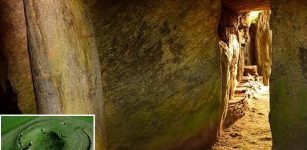 5,000-Year-Old Bryn Celli Ddu Funeral Complex Reveals More Secrets
Archaeology | Jun 28, 2017
5,000-Year-Old Bryn Celli Ddu Funeral Complex Reveals More Secrets
Archaeology | Jun 28, 2017 -
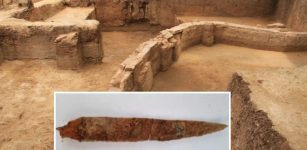 Rare Well-Preserved 2,500-Year-Old Dagger Linked To The Keeladi Civilization Discovered In Tamil Nadu, India
Archaeology | Aug 13, 2021
Rare Well-Preserved 2,500-Year-Old Dagger Linked To The Keeladi Civilization Discovered In Tamil Nadu, India
Archaeology | Aug 13, 2021 -
 Hesperides – Greek Nymphs Who Guarded Fabled Garden With Divine Apples Of Immortality
Featured Stories | Jun 4, 2020
Hesperides – Greek Nymphs Who Guarded Fabled Garden With Divine Apples Of Immortality
Featured Stories | Jun 4, 2020 -
 Lofn ‘Matchmaker’ – Norse Goddess Of Forbidden Marriages Of People Who Wish To Be Loved And Search For Partners
Featured Stories | Mar 25, 2021
Lofn ‘Matchmaker’ – Norse Goddess Of Forbidden Marriages Of People Who Wish To Be Loved And Search For Partners
Featured Stories | Mar 25, 2021 -
 Ancient Sahul: Its Submerged Landscapes Reveal A Mosaic Of Human Habitation
Archaeology | Dec 26, 2023
Ancient Sahul: Its Submerged Landscapes Reveal A Mosaic Of Human Habitation
Archaeology | Dec 26, 2023 -
 TB Was Transmitted in South America – DNA Study Shows How It Happened
Archaeology | Mar 17, 2022
TB Was Transmitted in South America – DNA Study Shows How It Happened
Archaeology | Mar 17, 2022 -
 The Untold Story Of The Inca – Fire In The Sky – Part 1
Ancient Mysteries | Jul 2, 2019
The Untold Story Of The Inca – Fire In The Sky – Part 1
Ancient Mysteries | Jul 2, 2019 -
 Cajamarca, Peru: Three Archaeological Sites – Identified
Archaeology | Aug 24, 2015
Cajamarca, Peru: Three Archaeological Sites – Identified
Archaeology | Aug 24, 2015 -
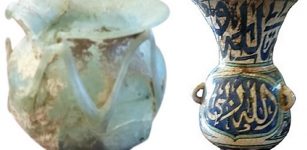 Attempt To Smuggle Three Artefacts From Alexandria Port – Failed
Artifacts | Oct 28, 2020
Attempt To Smuggle Three Artefacts From Alexandria Port – Failed
Artifacts | Oct 28, 2020 -
 Puzzling McClelland Sherd – Undeciphered Inscription Could Be Early Bronze Age Writing
Artifacts | Mar 27, 2018
Puzzling McClelland Sherd – Undeciphered Inscription Could Be Early Bronze Age Writing
Artifacts | Mar 27, 2018 -
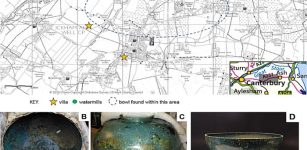 Modern Pesticide Accelerates Corrosion Of Ancient Roman Bowl
Archaeology | Oct 6, 2022
Modern Pesticide Accelerates Corrosion Of Ancient Roman Bowl
Archaeology | Oct 6, 2022 -
 Does This Cathedral Offer Evidence Our Calendar Is ‘Missing’ 297 Years?
Featured Stories | May 6, 2022
Does This Cathedral Offer Evidence Our Calendar Is ‘Missing’ 297 Years?
Featured Stories | May 6, 2022 -
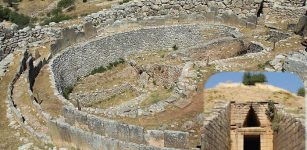 Mycenae Kingdom: Home To King Agamemnon And Tholos Tomb ‘Treasure of Atreus’
Civilizations | Jun 11, 2022
Mycenae Kingdom: Home To King Agamemnon And Tholos Tomb ‘Treasure of Atreus’
Civilizations | Jun 11, 2022 -
 New Unique Ancient Underwater Finds In The Ports Of Caesarea And Acre
Archaeology | Aug 11, 2021
New Unique Ancient Underwater Finds In The Ports Of Caesarea And Acre
Archaeology | Aug 11, 2021 -
 Ivar The Boneless: Famous Viking And Son Of Ragnar Lodbrok
Featured Stories | Jun 6, 2016
Ivar The Boneless: Famous Viking And Son Of Ragnar Lodbrok
Featured Stories | Jun 6, 2016 -
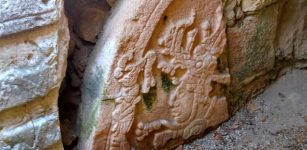 Dzibilchaltún: One Of The Most Ancient Mayan Centers In Northwest Yucatan, Mexico
Civilizations | Feb 2, 2016
Dzibilchaltún: One Of The Most Ancient Mayan Centers In Northwest Yucatan, Mexico
Civilizations | Feb 2, 2016 -
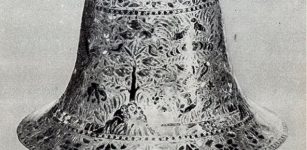 Enigma Of Ancient Bell-Shaped Metal Vase Found In Solid Sedimentary Rock
Artifacts | Jun 6, 2019
Enigma Of Ancient Bell-Shaped Metal Vase Found In Solid Sedimentary Rock
Artifacts | Jun 6, 2019 -
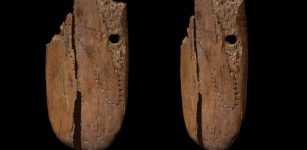 41,500-Year-Old Ivory Pendant Is The Oldest Evidence Of Humans Decorating Jewelery In Eurasia
Archaeology | Nov 26, 2021
41,500-Year-Old Ivory Pendant Is The Oldest Evidence Of Humans Decorating Jewelery In Eurasia
Archaeology | Nov 26, 2021 -
 Sumerians Built A Huge ‘Anti-Drought Machine’ To Save Ancient City Of Girsu From Destruction
Ancient Technology | Nov 23, 2023
Sumerians Built A Huge ‘Anti-Drought Machine’ To Save Ancient City Of Girsu From Destruction
Ancient Technology | Nov 23, 2023

